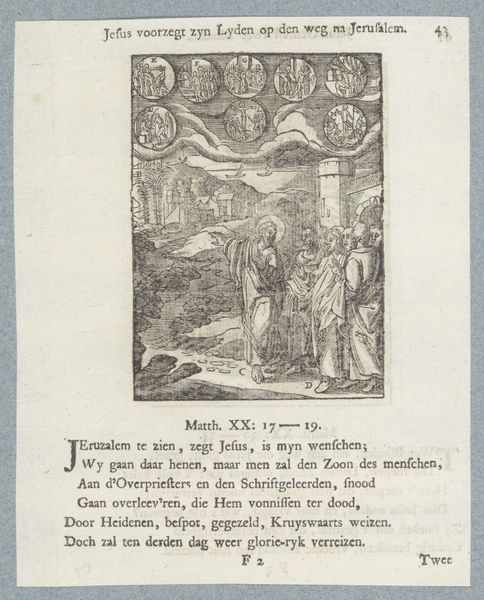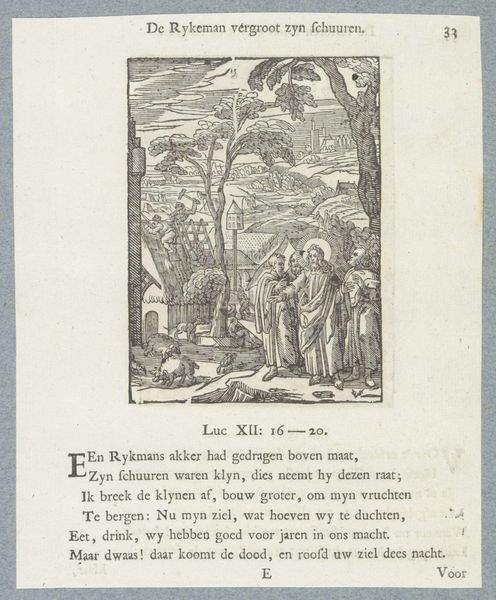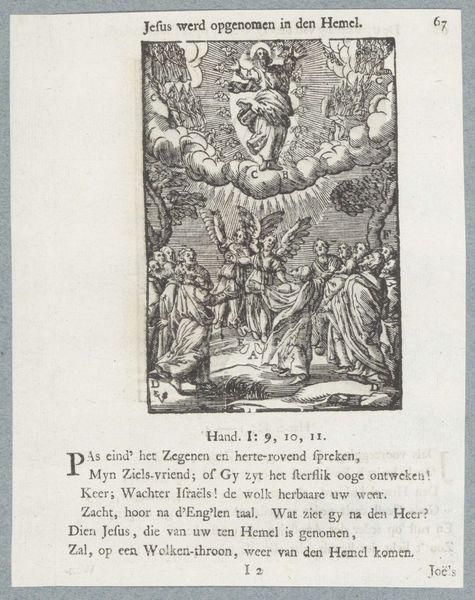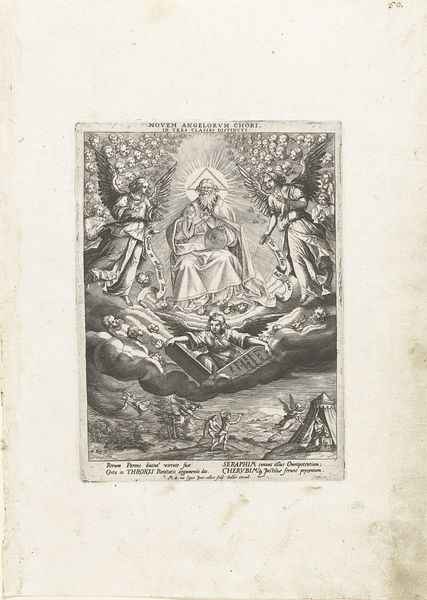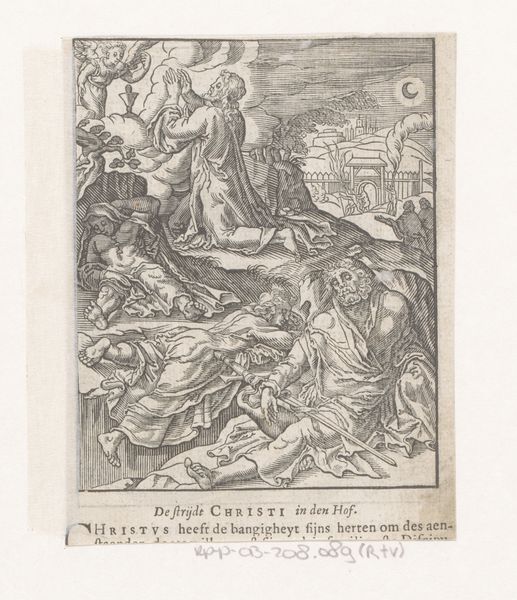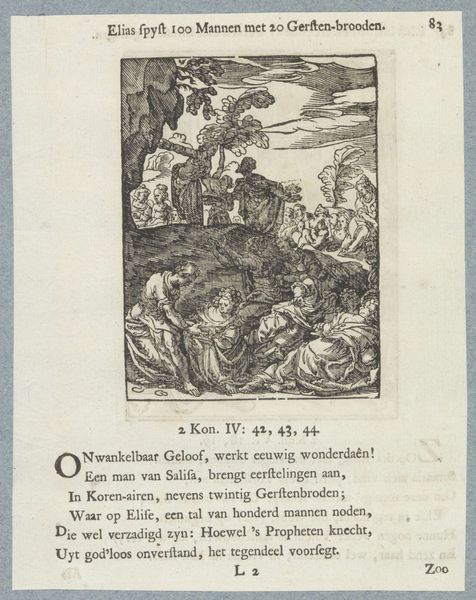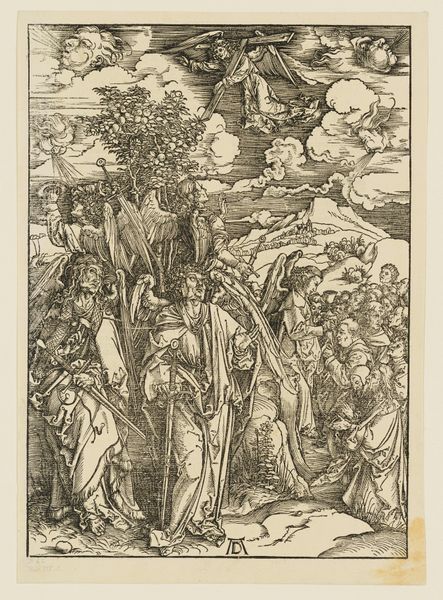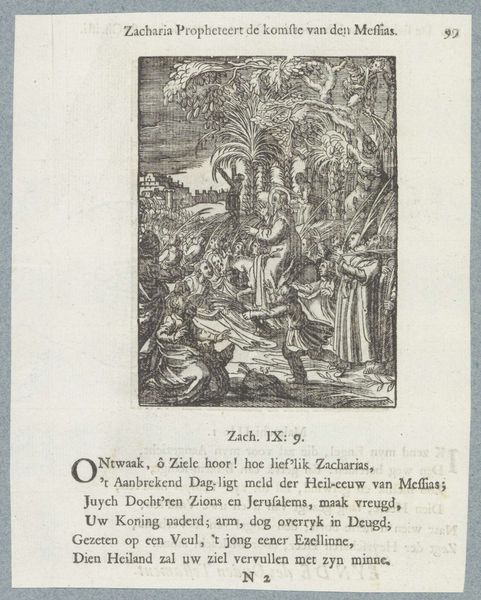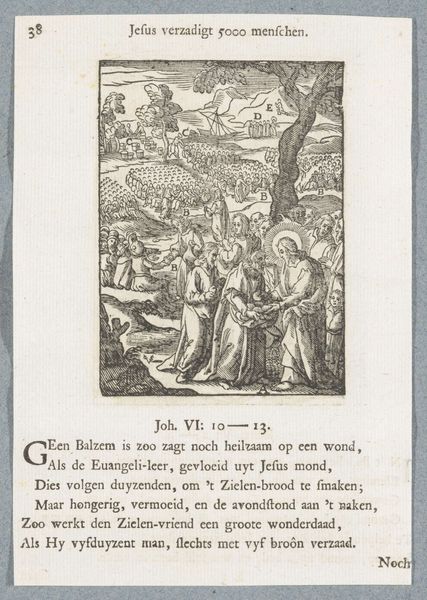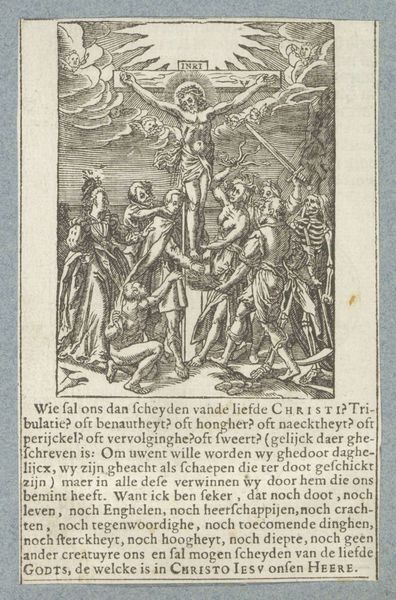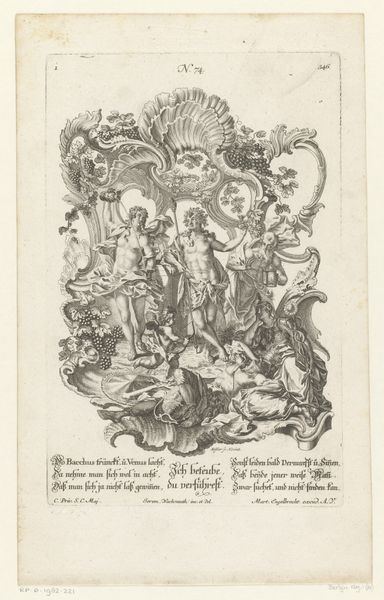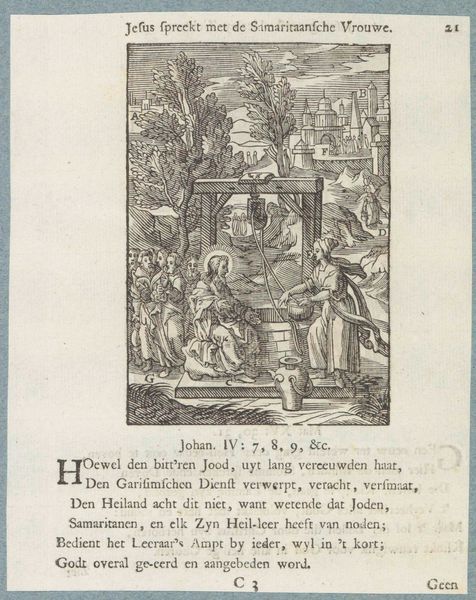
print, engraving
#
baroque
# print
#
figuration
#
history-painting
#
engraving
Dimensions: height 110 mm, width 76 mm, height 167 mm, width 133 mm
Copyright: Rijks Museum: Open Domain
Editor: Here we have "Angels Holding Back the Four Winds," a print made between 1629 and 1740 by Christoffel van Sichem II. The level of detail, despite its small scale, is amazing. The overall effect is pretty intense, almost chaotic with so much going on. How do you interpret this work, given the artist’s choices in composition and subject matter? Art Historian: Indeed, a very active scene. Consider the historical context: religious engravings like this were frequently used to communicate biblical narratives to a largely illiterate population. Notice the number 4 and the "four winds." The imagery, drawing from the Book of Revelation, evokes ideas of divine control over natural forces and the promise of salvation amidst chaos. Do you recognize any of the key symbols being represented here? Editor: Well, I see angels, obviously, and wind implied through the billowing clouds. The text at the bottom seems related but I can’t read it very well. Are there other symbols I am missing? Art Historian: Look closely at what the angels are holding. Some have instruments that appear almost weapon-like. Others hold symbolic objects that recall their protective roles. These are visual cues that communicate power, restraint, and divine intervention. Also the seal that is mentioned in the text held by the "fifth" angel who is holding the winds to cause destruction on "noch Aarde, Zee, noch boom" until the seal can be given. Consider the engraving's function. Editor: That’s fascinating, so it's not just about depicting a scene, but encoding it with meaning that resonates with beliefs and fears of the time? It makes me consider its effect on the viewer at that time and to examine it beyond face value. Art Historian: Precisely. The lasting power of symbols is their ability to tap into the cultural memory. Studying art such as this helps us understand not only the past, but how certain symbols continue to resonate even today.
Comments
No comments
Be the first to comment and join the conversation on the ultimate creative platform.

